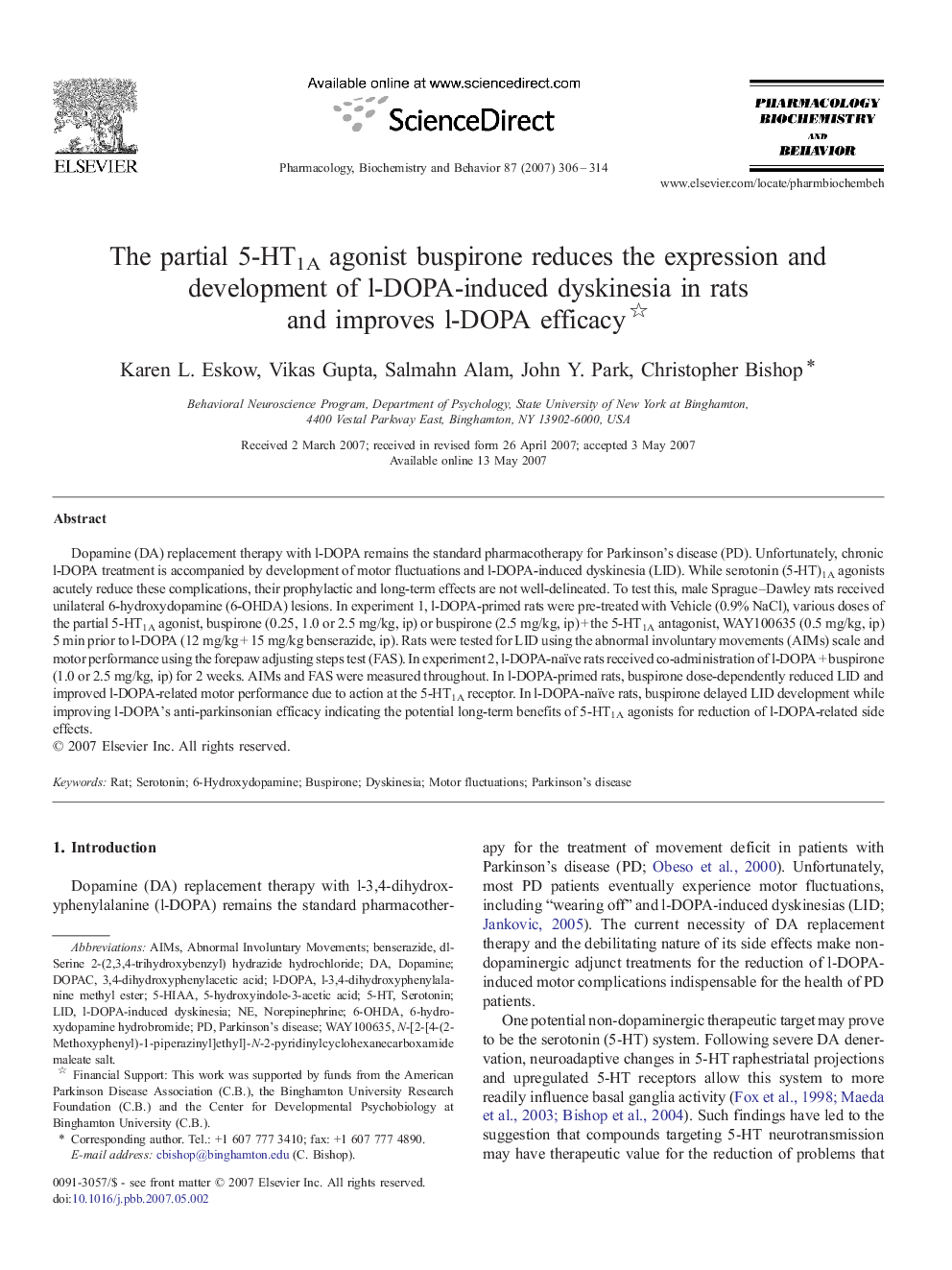| Article ID | Journal | Published Year | Pages | File Type |
|---|---|---|---|---|
| 2014258 | Pharmacology Biochemistry and Behavior | 2007 | 9 Pages |
Dopamine (DA) replacement therapy with l-DOPA remains the standard pharmacotherapy for Parkinson's disease (PD). Unfortunately, chronic l-DOPA treatment is accompanied by development of motor fluctuations and l-DOPA-induced dyskinesia (LID). While serotonin (5-HT)1A agonists acutely reduce these complications, their prophylactic and long-term effects are not well-delineated. To test this, male Sprague–Dawley rats received unilateral 6-hydroxydopamine (6-OHDA) lesions. In experiment 1, l-DOPA-primed rats were pre-treated with Vehicle (0.9% NaCl), various doses of the partial 5-HT1A agonist, buspirone (0.25, 1.0 or 2.5 mg/kg, ip) or buspirone (2.5 mg/kg, ip) + the 5-HT1A antagonist, WAY100635 (0.5 mg/kg, ip) 5 min prior to l-DOPA (12 mg/kg + 15 mg/kg benserazide, ip). Rats were tested for LID using the abnormal involuntary movements (AIMs) scale and motor performance using the forepaw adjusting steps test (FAS). In experiment 2, l-DOPA-naïve rats received co-administration of l-DOPA + buspirone (1.0 or 2.5 mg/kg, ip) for 2 weeks. AIMs and FAS were measured throughout. In l-DOPA-primed rats, buspirone dose-dependently reduced LID and improved l-DOPA-related motor performance due to action at the 5-HT1A receptor. In l-DOPA-naïve rats, buspirone delayed LID development while improving l-DOPA's anti-parkinsonian efficacy indicating the potential long-term benefits of 5-HT1A agonists for reduction of l-DOPA-related side effects.
